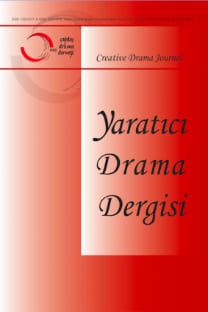Fu Manchu Hayatta mı? Tayvan’da Yaşayan Beyazlar Arasında Cinsellik ve ‘Sarı Tehlike’ Stereotipleri
Bu çalışma Çinlilere yönelik Batılı stereotiplerinin dalgalanışını inceliyor. Araştırma çok disiplinli bir yöntem kullanarak Fu Manchu karakterinin tarihi gelişimini Tayvan da yapılmış güncel saha çalıştırmasıyla paralel olarak inceliyor. Bu iki incelemenin birleşimi, uluslar arası ilişkiler arenasından gündelik hayatın mikro-performanslarına kadar beyazlığın nasıl oynandığı konusunda yeni bir anlayış sunuyor. Araştırmanın önemli bir vurgu noktası Tayvan da yaşayan Batılıların üstünlük fantezilerini gerçekleştirmek için ürettikleri alansal konfigürasyonlar üzerine. Araştırmabu Batılı performansların evrensellik iddalarını dargörüşlü bir kültürel öğe olarak algılayıp, araştırmacının sübjektifliğini red etmeyen bir saha çalışması yöntemi benimsiyor
Anahtar Kelimeler:
Toplumsal cinsiyet, Irkçılık, Sömürgecilik
Is Fu Manchu Still Alive? Sexuality and Yellow Peril Stereotypes Among White Expatriates in Taiwan
This paper examines the oscillations of Western stereotypes regarding the Chinese. The research uses a multidisciplinary approach by combining a genealogical study of the character of Fu Manchu with recent fieldwork in Taiwan among Western expatriates. The combination of these studies reveal an insight regarding the staging of whiteness from the global scale of international relations down to micro performances of quotidian expatriate life. A particular focus is on how expatriates make use of spatial configurations to accentuate their fantasies of superiority. The paper identifies the universalism of such Western performances as a parochial cultural element and embraces a method of conducting fieldwork without denying the subjectivity of the ethnographer
Keywords:
Gender, Racism, Colonialism,
___
- Abu-Lughod, L. (2015). Do Muslim women need saving? Cambridge: Harvard Univ. Press.
- Benshoff, H M. (1997). Monsters in the closet: homosexuality and the horror film. Manchester: Manchester University Press
- Bhaba, H. (1983). “The Other Question”. Screen. 24 (06). 18–36.
- Black, J. (2005). The politics of James Bond: from Flemming’s novels to the big screen. Lincoln: University of Nebraska Press.
- Butler, J. (1990). Gender trouble: feminism and the subversion of identity. London: Routledge.
- Chen, A. (2012). “The monstering of swimmer Ye Shiwen says much about declining superpowers.” Guardian August 2012.
- Chin, T. (1988). Daughter of Shanghai. Reading:Corgi.
- Densmore, D. (1973). “Independence from the sexual revolution.” Radical feminism: 107–118.
- Desai, D. (2010). The challenge of new colorblind racism in art education. Art Education, 63(5). 22-28.
- Douglas, M. (2013). Purity and danger. [ebook] Routledge.
- Frayling, C. (2014). The yellow peril: Dr. Fu Manchu & the rise of chinaphobia. [ebook]. Thames & Hudson.
- Freud, S. (2001). Totem and taboo. trans: James Strachey. [ebook] Routledge.
- Freud, S. (1961). Civilisation and it’s discontents trans: James Strachey. New York: W.w Norton & Company Inc.
- Gould, S J. (2006). The mismeasure of man [ebook]. W.W Norton.
- Hanser, A.(2012). “Yellow peril consumerism: China, North America, and an era of global trade.” Ethnic and Racial Studies 36 (04). 632–650.
- Hevia, J L. (2003). English lessons: The pedagogy of imperialism in nineteenth-century China. Durham: Duke University Press
- Jackson, M. (1989). ”‘Facts of Life’ or the eroticization of women’s oppression? Sexology and the Social construction of heterosexuality.” In the cultural construction of sexuality. Edited by Pat Caplan. London: Routledge.
- McClintock, A. (2013). Imperial leather: race, gender, and sexuality in the colonial contest. London: Routledge.
- McVeigh, B. (2000). “ How Hello Kitty commodifies the cute, cool and camp ‘consumutopia’ versus ‘control’ in Japan.” Journal of Material Culture. 5 (02). 225–245.
- Miller, D. (2013). A Theory of shopping. Oxford: John Wiley & Sons.
- Nguyen, M T. (2011). “The Biopower of beauty: humanitarian imperialisms and global feminisms in an age of terror.” Signs. 36 (02). 359–383
- Sarup, M. (1991). Education and the ideologies of racism. 13/14 Stoke-on-Trent: Trentham Books,
- Spillane, S. (2015). The failure of whiteness in art education: A personal narrative informed by critical race theory. The Journal of Social Theory in Art Education. 35. 57.
- Stoler, A L. (2010). Race and the education of desire: Foucault’s history of sexuality and the colonial order of things. University of California Press.
- Towers, H A. (2013). Mr Towers of London: a life in show business. London:BearManor Media.
- Weber, C. (1998). “Performative states”. Millennium a Journal of International Studies 27: 77–95.
- Wood, S P. (2010). “‘CHOU GAGS CRITICS IN BANDOENG’ or How the media framed premier Zhou Enlai at the Bandung conference, 1955.” Modern Asian Studies.44 (05). 1001–1027
- ISSN: 1305-8177
- Başlangıç: 2006
- Yayıncı: Gençlik Kulübu ve Çağdaş Drama Derneği
Sayıdaki Diğer Makaleler
Özel Gereksinimli Birey Farkındalığının 4-6 yaş Çocuklarına Kazandırılması
Fatih Kıvanç ERDOĞAN, Sema BAŞ
Alev Çelik Bayramoğlu, Songül Başbuğ
Hidroelektrik Santrallerin Çevresel Etkilerinin Yaratıcı Drama Yöntemiyle İşlenmesi
Yaratıcı Drama ve Absürd Tiyatro
Kadınların Tarih Boyunca Suskunluğuna İki Örnek: Sessizlik ve Ophelia
Fu Manchu Hayatta mı? Tayvan’da Yaşayan Beyazlar Arasında Cinsellik ve ‘Sarı Tehlike’ Stereotipleri
Alev ÇELİK BAYRAMOĞLU, Songül BAŞBUĞ
Ergenler İçin “Gelecek Beklentisi Farkındalık Eğitimi” Programının Etkinliğinin Sınanması
Ayşe Didem KONATE, Derya ATALAN ERGİN
Yaratıcı Drama Yöntemiyle Farklı Kültürleri Tanıma ve Bir Arada Yaşama Çalışmaları
